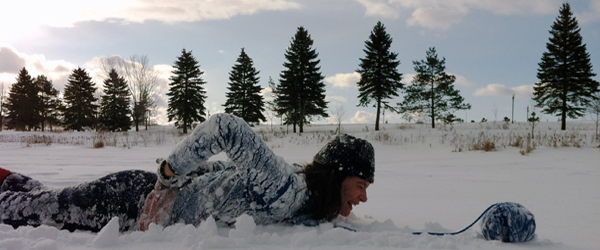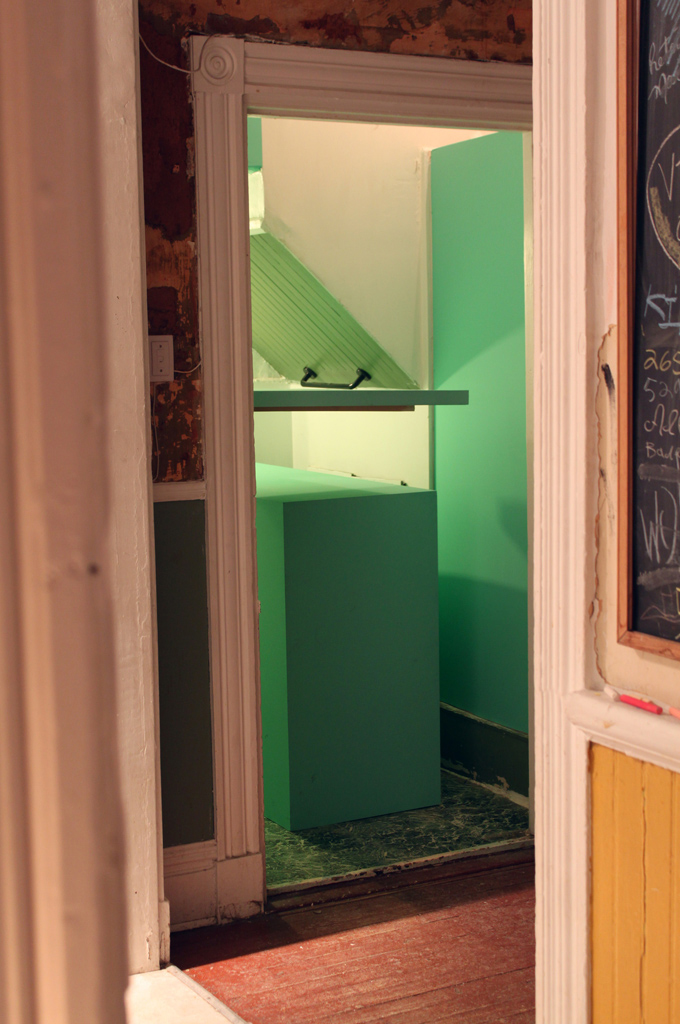
Performance Art, Cultural Activism and Politics: Québec to Belfast
Art, Art NewsQuébec City has a vibrant history of performance art and live arts that extends back to the early work of collectives run by artists, like Inter/Le lieu since the 1970s.
More recently, however, younger generations have been carving “spaces” for a new type of “art-performance”. This is an exciting and crucial time with new energy and breath: fresh, fun, but on the edge. From Thursday the 26th of January for three nights, the artist-collective Cornet3boules, in collaboration with Marie-Claude Gendron, curated a superb series of performances, many site-specific, and tableaux vivants, curiously entitled, “On s’graisse la patte (pendant trois jours)”.
The festival presented the work of more than 20 artists from Québec, in what they describe as a “friendly but messy framework”. Friday and Saturday’s performances took place in the disused building on St. Vallier that once housed Le Soleil newspaper.
With Québec-based artist Carolyne Bolduc, I was invited to figure in one of the tableaux (still actions) by Gendron. A poet exploring words through photography, Bolduc has experience picturing the beauty and curiosities of architectural space.

Carolyne Bolduc, as part of YY collective, also explores ideas of human relationships to built environments; photo Carolyne Bolduc
The artist-curator, Gendron, was asking us to mimic the vertical architecture of the majestic space. Carolyne and I performed a balancing act in synchronicity: I balanced precariously on a pile of shaky plastic food crates, and she mirrored my actions subtly from a crevice in the wall where she had carefully lodged and contorted her body. We were both actually with/in-context. Both at 10 feet above floor level, this was a little crazy, a health and safety hazard for sure.
There were other “physical” performances (of the body), notably, that of Christian Messier, who is well-known for igniting himself on fire, and that of the emerging Frédérique Hamelin of Cornet3boules, who created an intuitive relational (body) work, snapping her fingers with the audience eventually joining. She was not thrown off, but rather embraced the confusion. This was a unique introduction to Québec City and the current performance art scene.
On the Sunday morning, after the last (late) night of performances, veteran performer Alain-Martin Richard (Québec) and I decided to act in response to the timeliness of this festival in connection with important occurrences that were developing within the north of Ireland.
Belfast has numerous separation barriers, known as peace walls between divided communities (one source counts 88, although there are varying numbers being tossed around from 40 to 90, depending on what you define as a wall or interface). Having worked there as an artist from October 2010 to October 2011 (before my return to Canadian soil), I was interested in working with others on the ground to ask questions and provoke dialogue about the walls and their effects on communities living on either side.

Peace walls or lines in North-East Belfast (top) and North Belfast (bottom); photos Fiala (top) and Jordan Hutchings (bottom), Summer 2011. The bottom image is from a performance with Irish artist Eve Vaughan.
Recently, an email was sent to me from a colleague of the local performance collective Bbeyond, informing me that there has been talk about the walls coming down. I had seen recent news online relating to this issue, too. With its radical performance art, Bbeyond has been activating varied spaces with impromptu performances on a monthly basis for many years now. The collective has just celebrated its 10-year anniversary in 2011; see http://www.bbeyondperformance.org/. Focusing on fostering performance art practice in the north of Ireland, Bbeyond has continuing links in Québec.
In the basin of the river at Limoilou, Québec, at the place where Jacques Cartier “discovered” Canada, where First Peoples already were/are, Richard and I performed a calculated, but savage action, that started (and ended) with the planting of a red dowel into the ice. We titled the action “Blue, Blanc, Rouge” captured in the photo series below. We acted out of solidarity with efforts to open dialogue about the peace walls (such as the cultural and art activism of Draw Down the Walls in North Belfast), striving to serve as examples of how change could be catalysed through art.

From the performance-action Blue, Blanc, Rouge by Fiala/Richard; photos Emmanuel Duret and Guy Sioui Durand
Like the well-known ice hockey team, les Canadiens, blue, white, and red are the colours of British and French tricolor flags. These also happen to be “our” founding fathers, and mothers. In recent hockey, it is also down to questions of language and culture. We are always in a fragile, creative, acoustic and physical performance with one another (like Alain-Martin and me).
Through the snow, against the wind and elements, we were recreating that fine line that makes us all borderlands. Always in-between.
This and that.
You and me.
Blue and red on white in snow.
This was a temporary, admittedly “conceptual,” line, but not totally unlike those peace lines criss-crossing Belfast, and especially the north of the city.
So even in Québec City, far away, “we” can be closer.























